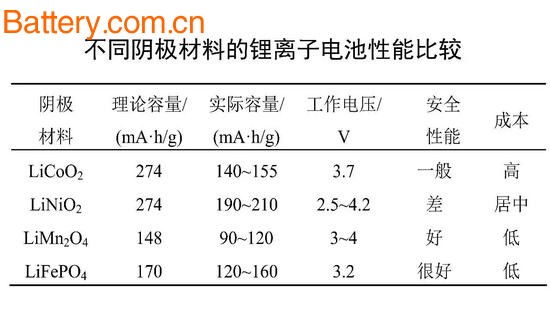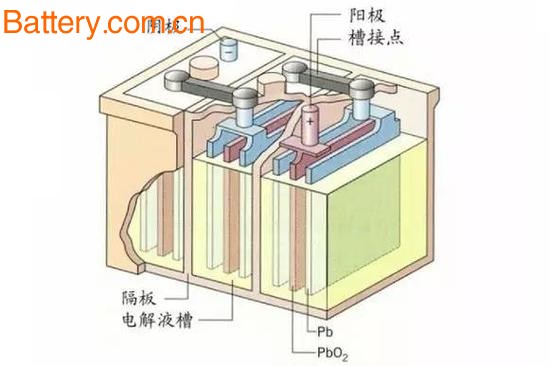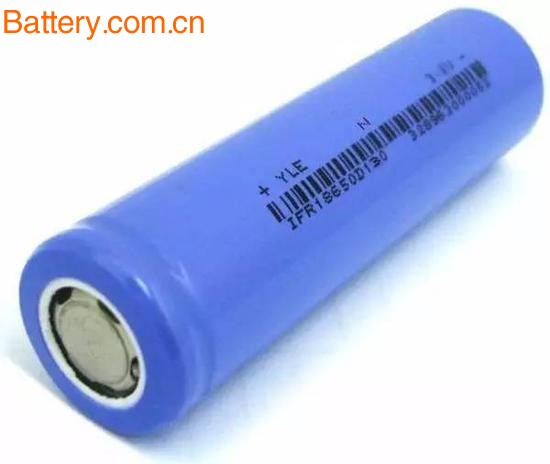"I am willing to invest all the assets in Yinlong today." Dong Mingzhu said at the "China Manufacturing Summit Forum" on December 15 last year. It is reported that Yinlong is a young new energy technology company. In 2011, Yinlong Holdings held the United States Titanium Nanotechnology Co., Ltd. to master the production technology of lithium titanate materials in lithium batteries for electric vehicles.
"Electric vehicle batteries are not only the core of the development of electric vehicles, but also a key combination point between the power industry and the automotive industry." Wang Binggang, head of the National New Energy Vehicle Innovation Engineering Expert Group, said. At present, there are many types of batteries for electric vehicles (including low-speed electric vehicles, hybrids, etc.), such as Toyota's hybrid models with nickel-metal hydride batteries, Honda hybrids, Buick hybrids with lithium batteries, Dong Mingzhu optimistic about Yinlong lithium titanate Battery, BYD new energy uses lithium iron phosphate battery.
It can be seen that the core of new energy development is battery technology. Lu Guanqiu, chairman of Wanxiang Group, also said that "the progress of the battery is often a breakthrough, and it is the problem of choosing which material to use. This leads to a strong disruptiveness, so the investment risk is great. Now the battery is not only It is the most difficult problem that Wanxiang has encountered, and it is also the bottleneck that the industry can't break through at present."
So what are the mainstream battery types used in the new energy market now? What is the difference between their applications? Here is the "Car Watch" to lead everyone into the mystery of the battery world.
Lead-acid batteries
On behalf of enterprises or models: Changan Automobile, BAIC Group, Great Wall Motor, Geely Automobile, SAIC GM and other traditional fuel vehicles, generally use lead-acid batteries as vehicle power supply devices, most low-speed electric vehicles on the market also use lead-acid batteries.
The first generation of electric vehicles EV1 used lead-acid batteries, which were produced by General Motors in 1996, and lead-acid batteries were invented by Gaston Plante in 1859, from invention to application in electric vehicles for 137 years. The so-called lead-acid battery uses lead oxide as a positive electrode plate, sponge lead as a negative electrode plate, and sulfuric acid aqueous solution as an electrolyte solution. Lead-acid batteries are currently the most widely used batteries in the automotive field, mainly as power supplies for various electrical and electronic devices inside internal combustion engines.

Lead-acid batteries are available in both closed and non-closed versions. The enclosed type requires no maintenance, allows deep discharge, can be recycled, and is inexpensive, and has become the power supply device for most conventional fuel vehicles. For example, the maintenance-free lead-acid battery used by Buick Weilang. However, the low energy and low power of lead-acid batteries are their Achilles heel.
Industry experts pointed out that a single-cell lead-acid battery has a nominal voltage of 2.0V, can be discharged to 1.5V, and can be charged to 2.4V. In practical applications, 6 single-cell lead-acid batteries are often used in series to form a 12V lead. Acid batteries, there are 24V, 36V, 48V, etc., the service life is generally 3 years.
“Power and density can be increased by increasing the surface area of ​​the electrode, but it will increase the erosion speed and shorten the battery life.†Hu Zechun, an associate professor of electrical engineering at Tsinghua University, said, “The charging and discharging methods will also seriously affect its service life. Long-term overcharging and over-discharging can lead to shortened battery life."
The reason why lead-acid batteries have been widely used in the past 50 years, in addition to mature technology, mass production, low production costs, interchangeability and low price are also dominant factors. Despite the continuous generation of new battery technology, lead-acid batteries are still used as power sources, mainly for tourist vehicles, electric forklifts or some short-distance buses.
Alkaline battery
Representative companies or models: FAW Toyota hybrid models, Changan Ford hybrid models, Lexus RX400h, Porsche Cayenne, etc., generally use nickel-metal hydride batteries as the power source.
The so-called alkaline battery consists of nickel-based and alkaline solution electrolytes, mainly nickel-cadmium batteries, nickel-zinc batteries and nickel-hydrogen batteries. Among them, nickel-hydrogen batteries have higher specific energy than nickel-cadmium and nickel-zinc batteries. The environment is pollution free.
Industry experts pointed out that nickel-metal hydride batteries are synthesized by hydrogen ions and metal nickel. The electricity reserve is 30% more than that of nickel-cadmium batteries, and it is lighter than nickel-cadmium batteries and has a longer service life. The disadvantage of nickel-metal hydride batteries is that they are much more expensive than nickel-cadmium batteries, and their performance is worse than that of lithium batteries. It is reported that the second generation of electric vehicles developed by General Motors in 1999 was powered by nickel-metal hydride batteries, but eventually withdrew from the market due to lack of competitiveness. However, Toyota Motor Corporation of Japan has used the nickel-hydrogen battery technology to manufacture a third-generation electric vehicle that combines an internal combustion engine and an electric motor, that is, a hybrid electric vehicle (HEV).

Nickel-metal hydride batteries have become the most concerned battery in the research field and market application of electric vehicle battery technology. Compared with lead-acid batteries, nickel-metal hydride batteries have increased the energy bulk density by 3 times and the specific power by 10 times. The unique advantages of this technology include: higher operating voltage, specific energy and specific power, better overcharge and discharge resistance and thermal performance.
“However, there are certain limitations in the application of nickel-hydrogen batteries. The capacity is reduced at low temperatures and the charging resistance is not good at high temperatures; in addition, the price is also a major factor limiting the development of nickel-hydrogen batteries, and raw materials such as metallic nickel are very expensive. Although NiMH batteries store more energy than lead-acid batteries, over-discharge can cause permanent damage. The state of charge must be limited to a small range. Most of the energy stored in the battery is not actually used. For example, the Toyota Prius can only use 20% of the energy of the battery,†industry experts said.
Lithium Ion Battery
On behalf of the company or model: Honda mixed, Buick mixed, etc., such as Honda Accord sharp mixed, Buick Lacrosse mixed.
Lithium-ion batteries can be classified into two types: lithium ion batteries and lithium polymer batteries. The cathode materials of lithium ion batteries mainly include lithium cobalt oxide, lithium nickel oxide, lithium manganese oxide, lithium iron phosphate, etc., and the anode materials mainly include graphite, lithium titanate and the like. The performance of lithium ion batteries with different cathode materials is also different.


"Lithium-ion batteries have a relatively high operating voltage and a large specific energy compared to nickel-metal hydride batteries, which is three times that of nickel-metal hydride batteries. Lithium-ion batteries are small in size, light in weight, long in cycle life, and low in self-discharge rate. There is no memory effect and no pollution; the range of values ​​of the individual performance indicators of the battery is large, because lithium-ion batteries have more electrode combinations, and they have certain differences in performance," explains Associate Professor Hu Zechun.
Of course, the large number of lithium-ion batteries used in electric vehicles also has problems, mainly due to a variety of performance limitations, including lithium-ion battery safety, cycle life, cost, operating temperature and material supply. It is reported that lithium-ion batteries are currently dominated by small-capacity, low-power batteries, and large-capacity, high-power lithium-ion batteries have not yet been mass-produced. In addition, some technologies in the battery management system of the battery pack are still immature (such as balanced charging technology), which is one of the important reasons why lithium-ion batteries have not been widely used in electric vehicles.
Lithium iron phosphate battery
Representative enterprises or models: BYD pure electric vehicles (Qin, Qin EV, Tang, etc.), Yutong New Energy Bus, Xiamen Jinlong New Energy Bus, etc.
At present, in electric vehicles, a lithium ion battery that is widely used is a lithium iron phosphate battery. BYD New Energy uses lithium iron phosphate batteries. It has a phosphorus-oxygen covalent bond structure, so that oxygen atoms are not released, so the thermal stability and safety are better, and the price is relatively cheap. These factors make lithium iron phosphate batteries the first choice for small electric vehicles and PHEV power batteries.

Industry experts pointed out that lithium iron phosphate battery refers to a lithium ion battery using lithium iron phosphate as a positive electrode material. Its characteristic is that it does not contain precious elements such as cobalt, and the raw material price is low, and phosphorus and iron are rich in resources. The working voltage is 3.2V, the capacity is large under unit weight (170mAh/g), high discharge power, fast charging and long cycle life, and high stability under high temperature and high heat environment.
“However, in lithium-ion batteries, the specific energy, specific power and operating voltage of lithium phosphate batteries are relatively low, and lithium cobalt oxide and lithium manganese oxide batteries have advantages in large-scale pure electric vehicle applications,†said industry experts. .
Ternary lithium battery
On behalf of cars or models: Tesla, Geely Emgrand, Beiqi EV200, Jianghuai iEV5, Ai Ruize 7e, Roewe Erx5 and so on.
The lithium battery is a lithium battery using a nickel-cobalt-manganese ternary cathode material as a positive electrode material. According to Professor Ouyang Minggao of Tsinghua University, the so-called "three yuan" means that the positive electrode is ternary and the negative electrode is graphite. The ternary lithium battery has the advantages of high energy density and better cycle performance than normal lithium cobaltate. At present, with the continuous improvement of the formula and the perfect structure, the nominal voltage of the battery has reached 3.7V, and the capacity has reached or exceeded the level of lithium cobalt oxide battery.

The electric vehicle produced by Tesla is the ternary lithium battery. The selection reason for the Tesla battery technology director Kurt Kelty is: higher energy density, better stability and consistency; can effectively reduce the battery system. Cost; small size, controllability and security can be continuously improved.
However, some insiders pointed out that "the ternary lithium battery mainly has nickel-cobalt lithium aluminate battery and nickel-cobalt-manganese lithium battery. Due to the high temperature structure of nickel-cobalt aluminum, the high-temperature safety is poor, and the pH value is too high. The monomer is flatulent, which in turn causes danger and is currently costly."
It is reported that if the existing ternary lithium battery is internally short-circuited or the positive electrode material is in contact with water, there will be an open flame. Therefore, the general ternary lithium battery will have a layer of steel shell protection, because Tesla's battery pack is composed of 7000 or so 18650 batteries, so Tesla gives the battery pack a full range of protection, but in In the event of an extreme collision, there is still a fire hazard.
"And the lithium iron phosphate battery is much more stable. The battery board will not explode and burn even if it is puncture or short circuit. It will not catch fire when it is heated at 350 °C (the ternary lithium battery can't hold up at 180-250 °C) Therefore, in terms of safety performance, lithium iron phosphate battery is slightly better." Industry insiders told reporters.
Lithium titanate battery
Representative enterprise: Zhuhai Yinlong, the battery technology application is currently in the experimental stage.
In actual research and development applications, there is a lithium ion secondary battery with a positive electrode of ternary and a lithium iron titanate composition of 2.4V or 1.9V, which is commonly referred to as "lithium titanate", which has relatively safe performance and long life. It is not a common saying of "ternary materials."
"The so-called lithium titanate battery uses lithium titanate as the negative electrode material for the battery. This technical route is different from the mainstream using graphite as the negative electrode material." Industry insiders pointed out.

Dong Mingzhu, chairman of Gree Electric, said that “lithium titanate is one of the most mature products of American Titanium Nano.†Some insiders pointed out that “the advantages and disadvantages of using lithium titanate as the anode material are very obvious. It has long battery cycle life, fast charging, wide temperature resistance and good safety. The disadvantage is that the cost is high and the energy density is low. Correspondingly, the battery is bulky. Among them, the energy density is low (commonly speaking It is very fatal. It is generally believed that the energy density (90 wh/kg) of lithium titanate batteries is lower than other types of power batteries (110-120 wh/kg of lithium iron phosphate). One factor is that the technology is difficult to apply to new energy passenger cars (light vehicles).
Wei Yincang, chairman of Zhuhai Yintong New Energy, also admitted that “the lithium titanate battery developed by Yinlong is indeed a niche, and the economic benefits are also at the end, but he stressed that Yinlong values ​​the whole life cycle of this technology. Green and safe."
It is reported that this technology is mainly used in energy storage systems, robotics industry and a small number of buses. Because of the limited application range, lithium titanate batteries account for only 2% of the global lithium batteries. In addition to energy density, lithium titanate is more than two times more expensive than lithium iron phosphate and ternary materials. At present, only two companies in the world have a leading position in the field of lithium titanate batteries, one is Toshiba in Japan and the other is Zhuhai Yinlong.
Prospect
Everything has advantages and disadvantages. How do different types of power batteries perform? After all, long-term verification by the market is required. Among the batteries currently on the market, lithium-ion batteries (lithium-ion batteries and lithium-polymer batteries) are in an absolute position in addition to their disadvantages in terms of price and safety, and have prospects for further research and development and large-scale application. At present, among the hybrid models, the major automobile companies use nickel-metal hydride batteries and various lithium-ion battery-based batteries with a battery capacity of 3 to 60 kW·h or more. In traditional fuel vehicles, lead-acid batteries are mainly used as equipment power supply devices. Lithium titanate batteries are still in the research and development stage and have not yet been mass-produced.
Therefore, the competition for the different technical routes of the battery and the breakthrough of the core technology performance have just begun.
The structure of the Radiator Motor Fan or Cooling Fan Assemblies is mainly composed of motor, electric appliances, temperature switches, etc. In order to ensure the reliability, water temperature Sensor is used to control the fan. The water temperature switch is off when the temperature exceeds threshold level. There is no current in coil and the contact closure, so Fan Motor starts and supply air. The use of radiator Motor Fan can improve engine performance, reduce fuel consumption and reduce the noise, etc.
Our radiator motor fans with various kinds are selectable with different car models. With high strength, high heat conductivity and high safety coefficient, they are very popular in the foreign market.
Radiator Motor Fan
Radiator Motor Fan,Radiator Cooling Motor Fan,Cooling Fan Assemblies,Motor Fan,Fan Motor
NINGBO DGOFEN AUTO TRADE CO., LTD , http://www.dgofen.com